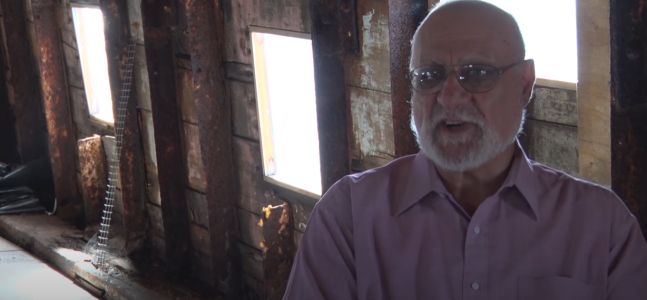
Congratulations to Clipper Ship City of Adelaide Director Peter Christopher, on being awarded the Medal of the Order of Australia for his services to Maritime History.
Peter Christopher convened the first meeting of Adelaide volunteers to save the City of Adelaide in July 2000 and worked tirelessly since in the preservation and restoration of this important piece of maritime history. His vision and dedication continue to be a driving force in the planned Seaport Village project at Dock 2, Port Adelaide.
Peter Christopher is also the author of 7 books on shipwrecks and riverboats, and co-author of another 2.
He served as the Public Sector Union (SA) state secretary and chief industrial officer for the Public Service Association of South Australia (1992-2015).
The City of Adelaide is the world’s oldest surviving clipper ship and one of only two remaining composite clipper ships. She was built in 1864, in Sunderland, England by William Pile, Hay and Co. for transporting passengers and goods between Britain and Australia. Between 1864 and 1887 the ship made 23 annual return voyages from London and Plymouth to Adelaide, South Australia. After a long and varied career, the City of Adelaide has returned to her namesake city due to the tireless efforts of Peter Christopher and his team.
A short documentary by Tasha Trebeck featuring Peter Christopher and other Clipper Ship City of Adelaide organization founders.
Thanks to Dick Kooyman for contributing to this post.

As the “Carrick” I attended many social events on this iconic ship.
Glasgow Corporation tried to charge local taxes as a static building but my late friend David Gray proved that the ship was only land bound because the Glasgow Corporation had built a bridge that stopped her going to sea. He won but eventually she sank at her berth and became a total loss. Eventually she was moved under the bridge to a haul out berth at Irvine and a lack of funds led to Australia recovering this iconic emigrant ship.
As the “Carrick” I attended many social events on this iconic ship when she was moored in Glasgow.
Glasgow Corporation tried to charge local taxes as a static building but my late friend David Gray proved that the ship was only land bound because the Glasgow Corporation had built a bridge that stopped her going to sea. He won but eventually she sank at her berth and became a total loss. Eventually she was moved under the bridge to a haul out berth at Irvine and a lack of funds led to Australia recovering this iconic emigrant ship.